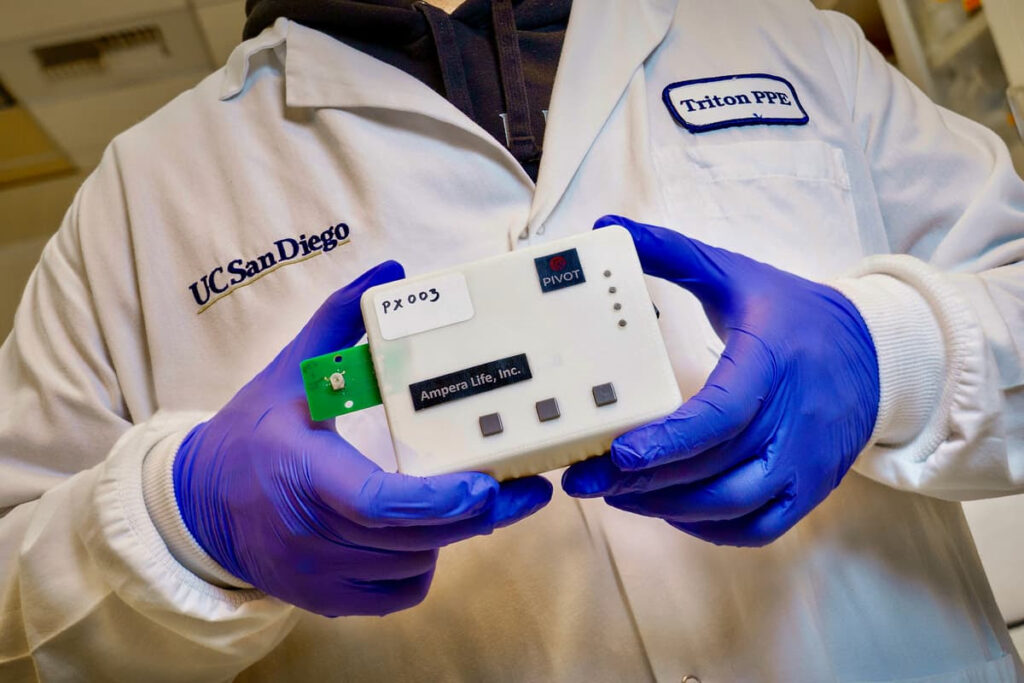By Ben Coxworth

The prototype device, which is currently being commercialized by biotech company Ampera Life
David Baillot/UC San Diego Jacobs School of Engineering
Because of the logistics and invasive procedures involved, many people put off getting tested for Alzheimer’s and Parkinson’s diseases. Thanks to a new portable device, however, such testing could soon be performed non-invasively at just about any location.
Ordinarily, testing for neurodegenerative diseases such as Alzheimer’s and Parkinson’s requires patients to travel to a hospital or clinic where they undergo a spinal tap and MRI scan. Needless to say, not many people are enthusiastic about doing so, plus they may lack the physical mobility or means of transportation needed to make the trip.
Seeking a more appealing alternative, an international team of scientists has adapted an existing portable device – which was designed to detect the COVID-19-causing SARS-CoV-2 virus – so that it can detect biomarker compounds associated with Alzheimer’s and Parkinson’s. More specifically, it detects amyloid beta and tau peptides which have been linked to Alzheimer’s, along with alpha synuclein proteins associated with Parkinson’s disease.
The device has so far been tested on brain tissue samples from deceased Alzheimer’s and Parkinson’s patients, where it proved to be as accurate as state-of-the-art testing techniques. That said, the ultimate goal is for it to detect the biomarkers in live patients’ saliva or urine samples.
A close look at the device’s GFET-equipped chip, with the source, drain and gate electrodes clearly visible
David Baillot/UC San Diego Jacobs School of Engineering
At the heart of the gadget is a chip which incorporates a highly sensitive graphene field effect transistor (GFET). An electrical current from an attached battery runs through that transistor – it’s delivered by a source electrode on one side and is taken up by a drain electrode on the other. A third electrode, known as a gate electrode, controls the amount of current that flows between the source and drain.
Attached to the gate electrode is a DNA strand – called an aptamer – that naturally binds with either amyloid beta or tau peptides, or synuclein proteins (depending on the specific aptamer used). If any of these compounds are present in the sample, they will change the amount of current flow when they bind with the aptamer on the gate electrode. That change in flow alerts users to the presence of the biomarker, via a notification on a wirelessly linked laptop or smartphone.
“This portable diagnostic system would allow testing at-home and at point of care, like clinics and nursing homes, for neurodegenerative diseases globally,” said the University of California – San Diego’s Prof. Ratnesh Lal, corresponding author of the study.
A paper on the research – which also involves scientists from the University of Texas Medical Branch, University of Illinois Urbana-Champaign and the University of the Chinese Academy of Sciences – was recently published in the journal PNAS.
Source: University of California – San Diego

Leave a Reply